Review of Ghost in the Shell Stand Alone Complex: Vol. 2
Introduction
After something of a protracted wait, the second volume of the Ghost In The Shell spin-off Stand Alone Complex is upon us. It`s a good thing, as Volume 1 left us with something of a cliffhanger, Section 9 were uncovering corruption in the police when a sinister figure from the past reappeared, threatening assassinations.
Ghost In The Shell inhabits one of those strange new worlds we often hear tell of. Set in the not too distant future, the divisions between man and machine are blurring. AI is a reality, and life like androids do the menial jobs that humans used to. It isn`t unusual for the average citizen to be enhanced in some way with implants or prosthetics. For some the enhancements are to such a degree that little of the original human remains. Major Motoko Kusanagi of Section 9 is one such person, who since the age of 6 has been equipped with a totally cybernetic body. The only biological component left is her brain. The differences between man and machine becomes ever more meaningless when machines can develop personality. It also opens up a whole new area of criminal activity, when cybernetically enhanced senses can be fooled by an enterprising hacker, or worse their brains themselves can be hacked into, subverting the innocent by reprogramming their `ghosts`. In the light of such terrifying possibilities, a special unit is created to head off the threat of such cyber-crime. Section 9 led by Aramaki is at the forefront of combating the new cyber criminals.
Once again, this release from Manga Entertainment comes on 2 discs. Disc 1 contains the four episodes and the bulk of the extras, as well as DD 2.0 and DD 5.1 soundtracks. Disc 2 contains the same episodes, but with DTS soundtracks. This time around, I received the test discs only, so I have to assume that the packaging will follow the same style established by the first release, that of an Amaray case inside a cardboard slipcase.
Episode 5: Decoy
Barely 36 hours remain before the threatened assassination of the Superintendent General of the police force. Aramaki is inclined to believe that the police are attempting to divert attention away from the Interceptors scandal, and points at their sudden interest in Nanao=A, a former office worker who the police suspect to be the Laughing Man, as something worthy of investigation. Section 9 are assigned to investigate Nanao=A`s background, but the Major decides to follow her ghost and chase up the original Laughing Man incident. There`s more to this than meets the eye.
Episode 6: Meme
The Superintendent General is in danger from his own chief bodyguard. The bodyguard`s ghost has been hacked and a virus implanted. It`s up to the Major to protect him now, but suddenly the virus begins to spread. Just how many assassins are there, and which if any is the real Laughing Man?
Episode 7: Idolator
Marcelo Jarti, hero of the nation of Jenoma has been reported assassinated. When he shows up in Japan, Section 9 is ordered to investigate. For a man who has suffered countless assassination attempts, he`s unreasonably lucky. Section 9 has to make sure that he is the real Marcelo Jarti and not just another double. When he meets with a notorious gangster, things begin to fall apart when the narcotics police crash the party.
Episode 8: Missing Hearts
A hospital nurse asks for the Major`s help, when it appears that a young girl received a heart transplant from an illegal source. The heart transplant saved the girl from receiving a full body prosthesis, but the idea of a black market organ transplant racket is worrying, especially when the policeman originally investigating the case is hospitalised. It`s a case that awakens some painful memories for Kusanagi.
At the end of every episode, there`s a brief Tachikoma animation to provide a few laughs at the cute robot antics.
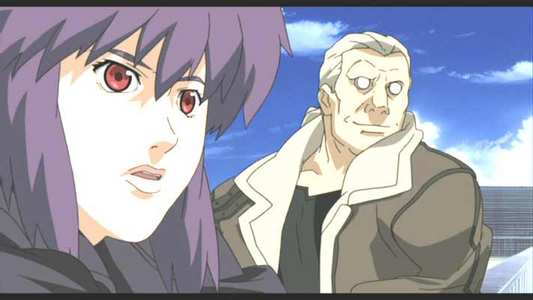
Video
Ghost In The Shell is presented in a 1.85:1 anamorphic ratio. I may have gone overboard in my praise of the first release, in retrospect there are one or two minor flaws that carry through onto this second release, one scene showed some macro blocking, but other than that the picture seems pristine. It must be said that the character design is greatly simplified in comparison to the detailed and beautiful characterisations of the movie. That`s to be expected when creating these characters for a serialised television show, but the animation is still dynamic and effortlessly realised. However the sheer detail and intricacy of the world design is marvellous. It`s the mix of the animation and design that makes this show look so good. The imagery in Stand Alone Complex can be breathtaking; for instance the end of Episode 7 takes place in a hospital room during a sunset. It`s fascinating to see the play of light on the room and the characters during the scene, so much so that the first time round I forgot to pay attention to what was being said.
The Ghost In The Shell movie was lauded for its use of CGI. Computer imagery was used to create displays and overlays in the film and certainly contributed to its look. Seven years of advances in animation have made Stand Alone Complex a different animal when it comes to CGI. All 3D objects are realised through the computer, and are flawlessly integrated with the traditional style animation. The displays and overlays are if anything better than in the film. To cap it all off, the title sequence is completely rendered in CGI, with a 3D version of Major Kusanagi in action in a computer-generated world.

Audio
This release comes with a full selection of soundtracks. Disc 1 has soundtracks in DD 2.0 English and Japanese Stereo, as well as DD 5.1 English and Japanese, whereas Disc 2 allows you to watch the show with DTS 5.1 English and Japanese (encoded at 754kbps), as well as a repeat of the DD 2.0 English Stereo track. There are English translated subtitles for both discs. The timing of the subtitles is more accurate than on the first release, though I did notice the isolated spelling mistake. The surround is most effective, with full use made of the speakers. There is plenty of action and sound effects, and the immersive experience is another enjoyable aspect of these discs. For preference I listened to the original Japanese dialogue. It must be noted that the sound dropped out for a second in Episode 7 at 13.46 minutes. This was only in the Japanese surround track; neither the two English tracks nor the Japanese Stereo track were affected. I dipped my metaphorical toe into the English dub; it`s better than most, it flows well but the dialogue still doesn`t seem natural.
Yoko Kanno composes the outstanding music for Ghost In The Shell, and this show is almost worth it for the music alone. The atmospheric Inner Universe accompanies the opening credits, one of the most fitting and inspiring pieces of music that I have heard on any television programme.

Features
The discs` presentation is impressive. Glorious animated menus reflecting the cyberpunk style of the show are set to the show`s music. The transitions between menus are short and never get tedious.
Disc 2 contains just the episodes, and an Interactive Quiz. Answer ten questions about and around Ghost In The Shell, and you unlock a sneak peak of episode 9.
If you select an episode on Disc 1 only, you`re taken to a sub-menu that lets you play the episode, read an episode synopsis or read the character profiles. Reading these pieces of text was quite a chore, as they were riddled with errors, spelling, factual, and grammatical. Simple mistakes like incorrect gender pronouns and names made it hard to figure out what was written. A little proof reading would have been useful here.
There are 33 minutes of trailers for other Manga Entertainment products on Disc 1. They are short trailers, all preceded by a burning logo. There are 40 trailers in total, most of them accompanied by the sort of thrash metal that makes ears bleed, and will never be heard on the actual movie itself.
Finally on Disc 1 are two interviews presented in 4:3 and subtitled Japanese stereo.
Osamu Saka, the voice of Aramaki speaks for 9½ minutes about his take on the character. It`s an interesting insight into the character that potentially fills in the background.
Second is an 11-minute interview with Yoko Kanno. I have been in awe of Kanno`s genius since I first saw the Cowboy Bebop movie. I have since heard more of her work on the Cowboy Bebop series as well as GITS:SAC. She has also worked on other anime like Wolf`s Rain, Macross Plus, and Vision Of Escaflowne. With her collaborators, she effortlessly turns her hand to any genre, whether it is classical, jazz, pop or the electronic score that drives Ghost In The Shell. Here she explains how she works and how the anime inspires her. She also mentions some of the people she works with, such as ORIGA who provides the haunting vocals for Inner Universe. She also can`t help tantalising with hints of what is yet to come in this series of Stand Alone Complex. Quite naturally there are excerpts of the soundtrack as well.
Problems with the interviews include the fact that the interviewees are windowed in the centre or the corner of the screen. Also the problem from Disc 1, where the English stereo track was shunted to my rear speakers, also affects these interviews, though thankfully it`s isolated to the interviews alone.

Conclusion
This second volume of Ghost In The Shell: Stand Alone Complex adds to and builds upon the first release, with four more entertaining episodes that flesh out the characters further and paint more detail in a rich and colourful universe. At its heart, Stand Alone Complex is a cop show; in each episode a particular cyber-crime is committed and Section 9 is sent to investigate and solve it. It`s a winning formula that works almost every time and is eminently suited to the world developed in the original film.
There is more time for character development here though, and the Major, Batou, Togusa and Aramaki do differ somewhat from their movie counterparts. Major Kusanagi is hardly as soul searching as before, and here is apt to make the occasional quip. The character of Togusa is explored to a greater extent here and he is more at the heart of the show. Being minimally enhanced, he`s the everyman character who guides us in the world of cyborgs. But it`s Batou who is the most different, he`s practically a comedian in his new guise as opposed to the dour man of few words in the movie, and it`s a change that is definitely one for the better. You can see the potential for these characters to grow and develop over the course of the series.
This release begins with resolving the cliffhanger left from Episode 4, and it takes two episodes to do so. It`s a labyrinthine plot, and while the story is resolved, enough threads remain to hint at the reappearance of the mysterious nemesis at the heart of the affair (There`s more of a hint if you can complete the quiz on Disc 2). It`s a worrying aspect of the future world that gets explored here, that technologically enhanced brains and by inference people`s souls will be vulnerable to hacking, that criminals may subvert their very actions. Idolator and Missing Hearts sees a return to the stand-alone episodes of the first disc. Idolator poses a question of just how far will someone go to stay alive, while Missing Hearts actually sees a contemporary problem, that of black market organ donors taken into a future setting. It`s an interesting take on the idea, and it also provides some background into the Major`s character.
Stand Alone Complex is shaping up to be an excellent anime series, the animation is superb, the stories compelling, and there`s plenty of action to balance out the philosophy. To top it all off, there`s Yoko Kanno`s stunning soundtrack driving the stories along. This release is in some ways an improvement over the first, but is let down by some niggling flaws that a little quality control could have dealt with. Regardless of that, Ghost In The Shell: Stand Alone Complex is a must see anime.
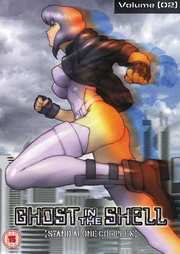

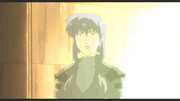
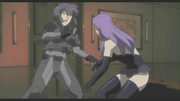
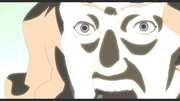
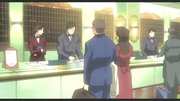
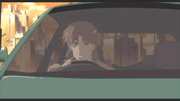

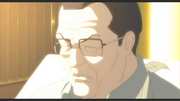

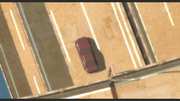
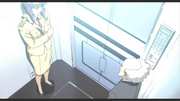
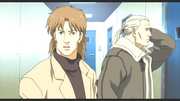
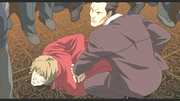
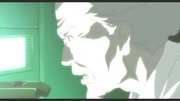
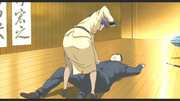
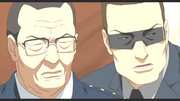

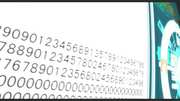

































Your Opinions and Comments
Be the first to post a comment!